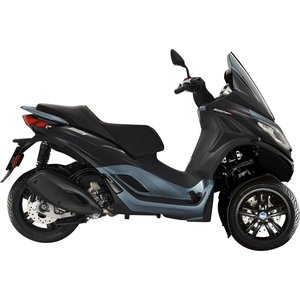Piaggio MP3 300 [2019-2022] Review: The Urban Trike That Redefines Practicality
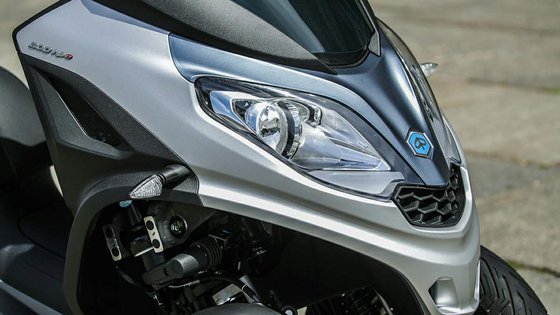
Introduction
The Piaggio MP3 300 isn’t just a scooter—it’s a statement. From 2019 to 2022, this three-wheeled marvel carved out a niche for riders who refuse to compromise between urban agility, long-distance comfort, and sheer innovation. With its signature tilting front suspension, Euro 5-compliant HPE engine, and tech-forward design, the MP3 300 feels like riding the future... today. I recently spent a week with a 2022 MP3 300 HPE Sport, and here’s why it left me questioning why all urban scooters don’t have three wheels.
Design & Ergonomics: Where Engineering Meets Italian Flair
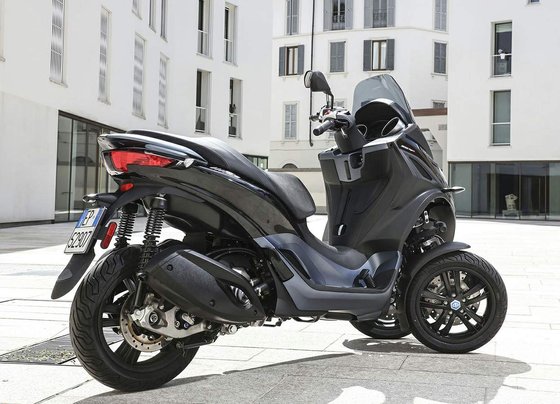
Piaggio’s design team clearly had a mission: Make a three-wheeled scooter look cool. The MP3 300’s double front wheels are framed by muscular fenders and a smoked front shield that gives it a cyberpunk edge. The Sport trim adds matte black accents, red shock springs, and waveform brake discs—details that scream “I’m not here for groceries” (even though it’s brilliant at that).
At 780 mm (30.7"), the seat height is accessible for most riders, and the split-level saddle cradles you like a premium office chair. The cockpit features a clear LCD dash with fuel/temp gauges, traction control alerts, and even a “roll lock” indicator for when you’ve engaged the hydraulic parking system. Storage? The 11L (2.9 US gal) under-seat compartment fits a full-face helmet and includes a USB port—perfect for charging mid-ride.
Engine & Performance: Small Displacement, Big Personality
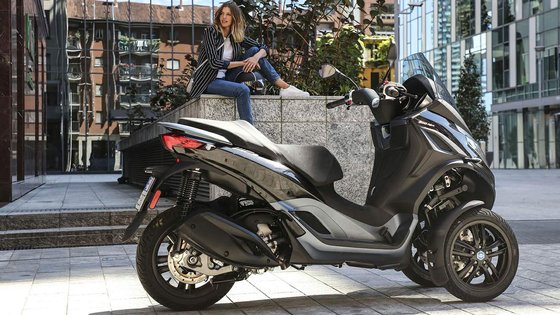
Don’t let the 278cc single-cylinder fool you—the HPE (High Performance Engine) is a gem. Liquid-cooled and fed by electronic injection, it delivers 25.8 HP (19 kW) at 7,750 RPM and 26.1 Nm (19.2 lb-ft) of torque at 6,250 RPM. Translation: It’s punchy enough to zip from 0-60 km/h (0-37 mph) in traffic while sipping fuel at ~30 km/L (70 mpg).
The CVT transmission is butter-smooth, and Piaggio’s traction control (ASR) is a silent hero on wet cobblestones. But the real magic happens at stops: Engage the tilt-lock, and you can sit upright without putting a foot down. Revolutionary? Absolutely.
Ride Experience: Stability Meets Playfulness
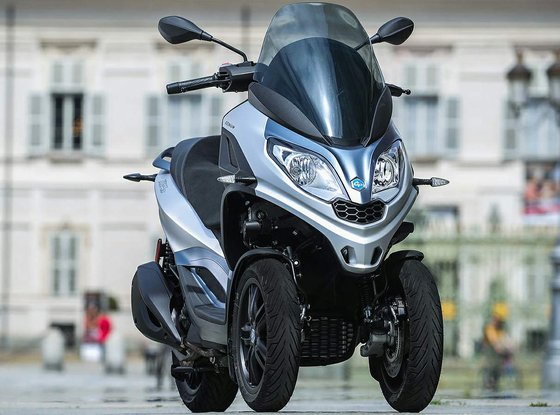
Riding the MP3 300 feels like cheating physics. The articulated quadrilateral front suspension lets it lean like a conventional scooter up to 40°, but with the grip of two 110/70-13 front tires. Cornering on winding roads? Shockingly fun. Filtering through gridlocked traffic? The 800 mm (31.5") width slips through gaps that’d give a BMW C 400 GT nightmares.
At highway speeds (up to 130 km/h or 80 mph), the 236 kg (520 lb) weight feels planted. The dual rear shocks (adjustable across 4 positions) soak up potholes, while the 258mm dual front discs with ABS inspire confidence. It’s not a sport bike, but it’s the most confident I’ve ever felt on a scooter in rain-soaked conditions.
Technology & Safety: Smarter Than Your Average Scooter
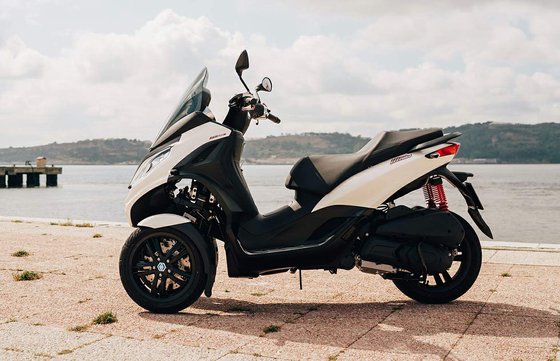
Piaggio packed the MP3 300 with tech that matters:
- 3-Channel ABS: Individual control for each front wheel + rear.
- ASR Traction Control: Prevents rear wheel spin on slick surfaces.
- Electro-Hydraulic Parking Lock: Stabilizes the scooter at stops with a button press.
- LED DRLs: Those slash-like daytime runners improve visibility.
The immobilizer system and tilt-sensitive engine cutoff (if you drop it) are nice touches for security nerds.
Competition: How the MP3 300 Stacks Up
The maxi-scooter segment is fierce, but the MP3 300’s three wheels let it sidestep direct rivals:
- Yamaha XMAX 300: More storage (13.8L under-seat) and similar power, but lacks the MP3’s tilt-lock stability and cornering flair.
- Honda Forza 300: Sleeker design and better wind protection, but conventional two-wheel dynamics feel archaic afterward.
- BMW C 400 GT: Premium build and TFT dash, but €2k pricier and 15% heavier.
The MP3’s niche? Riders prioritizing all-weather confidence over outright speed. That front-end grip is addictive.
Maintenance: Keeping Your MP3 300 in Peak Shape
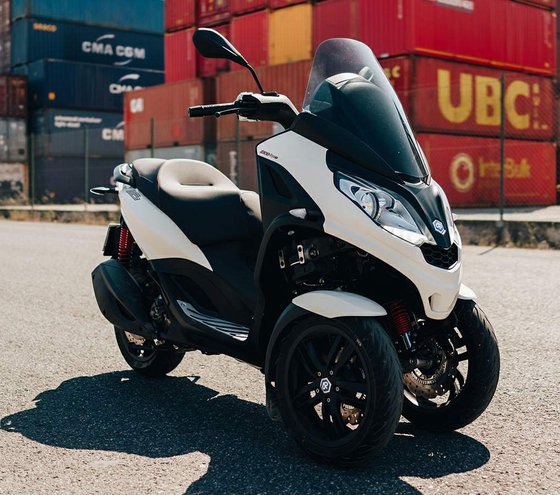
As a MOTOPARTS.store journalist, here’s my no-nonsense maintenance guide:
Key Service Intervals
- Engine Oil: SAE 5W-40 API SL. Change every 6,000 km (3,700 mi) with filter (1.2L capacity).
- Belt Drive: Inspect every 12,000 km (7,500 mi). Consider upgrading to a reinforced aftermarket belt for smoother acceleration.
- Coolant: Replace every 24,000 km (15,000 mi) using 2L of high-quality ethylene glycol mix.
- Brake Fluid: DOT 4. Flush every 2 years—critical for ABS performance.
Pro Tips
- Tire Pressures: Front 1.6 bar (23 psi), Rear 2.8 bar (41 psi). Underinflated rears murder handling.
- Spark Plugs: NGK CR8EIX iridiums last longer than stock CR8EKB coppers.
- Valve Checks: Every 10,000 km (6,200 mi). Intake 0.10mm, Exhaust 0.15mm (cold).
MOTOPARTS.store Upgrades
- LED Turn Signals: Boost visibility without clashing with the Euro5 ECU.
- Adjustable Windshield: The stock screen works, but a taller aftermarket one reduces buffeting at 100+ km/h.
- Performance Air Filter: K&N’s washable filter pairs well with the HPE’s injection system.
Final Verdict
The Piaggio MP3 300 isn’t for everyone—it’s for riders who value innovation over tradition. Yes, it’s 10-15% heavier than two-wheeled peers, and belt drives require more attention than chains. But where else can you carve canyon roads like a sportbike, park hands-free like a trike, and commute in monsoon rains without a heartbeat spike?
For urban warriors and weekend adventurers alike, the MP3 300 redefines what a scooter can be. And with MOTOPARTS.store’s catalog of upgrades, you can tailor it from a pragmatic daily rider to a touring-ready escape pod. Three wheels? Once you try it, two just feel… incomplete.
Specifications sheet
| Engine | |
|---|---|
| Stroke: | Four-stroke |
| Max power: | 19 kW | 25.0 hp |
| Max torque: | 26 Nm |
| Fuel system: | Electronic fuel injection |
| Max power @: | 7750 rpm |
| Displacement: | 278 ccm |
| Fuel control: | Single Overhead Cams (SOHC) |
| Max torque @: | 6250 rpm |
| Bore x stroke: | 75.0 x 63.0 mm (3.0 x 2.5 in) |
| Configuration: | Single |
| Cooling system: | Liquid |
| Compression ratio: | 11.0:1 (estimated) |
| Emission standard: | Euro 5 |
| Lubrication system: | Wet sump |
| Number of cylinders: | 1 |
| Features | |
|---|---|
| Storage: | Under-seat compartment with USB socket |
| Lighting: | LED daytime running lights |
| Safety systems: | 3-channel ABS, ASR traction control |
| Instrumentation: | Multifunction LCD with service indicators |
| Suspension lock: | Electro-hydraulic front suspension locking system |
| Dimensions | |
|---|---|
| Wheelbase: | 1450 mm (57.1 in) |
| Dry weight: | 236 |
| Seat height: | 780 mm (30.7 in) |
| Overall width: | 800 mm (31.5 in) |
| Overall length: | 2000 mm (78.7 in) |
| Ground clearance: | Not specified |
| Fuel tank capacity: | 11 L (2.9 US gal) |
| Drivetrain | |
|---|---|
| Clutch: | Automatic centrifugal dry clutch |
| Final drive: | belt |
| Transmission: | CVT with torque server |
| Maintenance | |
|---|---|
| Engine oil: | 5W-40 API SL |
| Idle speed: | 1700 ± 100 RPM |
| Brake fluid: | DOT 4 |
| Spark plugs: | NGK CR8EKB or NGK CR8EIX |
| Spark plug gap: | 0.7 |
| Coolant capacity: | 2.0 |
| Rear tire pressure: | 2.8 bar (41 psi) |
| Engine oil capacity: | 1.2 |
| Front tire pressure: | 1.6 bar (23 psi) |
| Engine oil change interval: | Every 5000 km or 2 years |
| Transmission fluid capacity: | 0.25 |
| Valve clearance (intake, cold): | 0.10 mm |
| Valve clearance check interval: | 24,000 km (15,000 mi) |
| Valve clearance (exhaust, cold): | 0.15 mm |
| Chassis and Suspension | |
|---|---|
| Frame: | Double cradle in high-strength tubular steel |
| Wheels: | Aluminum alloy (13" front/14" rear) |
| Rear tire: | 140/60-14 |
| Front tire: | 110/70-13 (x2) |
| Rear brakes: | 240 mm disc, ABS |
| Front brakes: | 2 x 258 mm discs, ABS |
| Rear suspension: | Dual hydraulic shock absorber with 4-position preload adjustment |
| Front suspension: | Articulated quadrilateral with electro-hydraulic suspension locking system |



